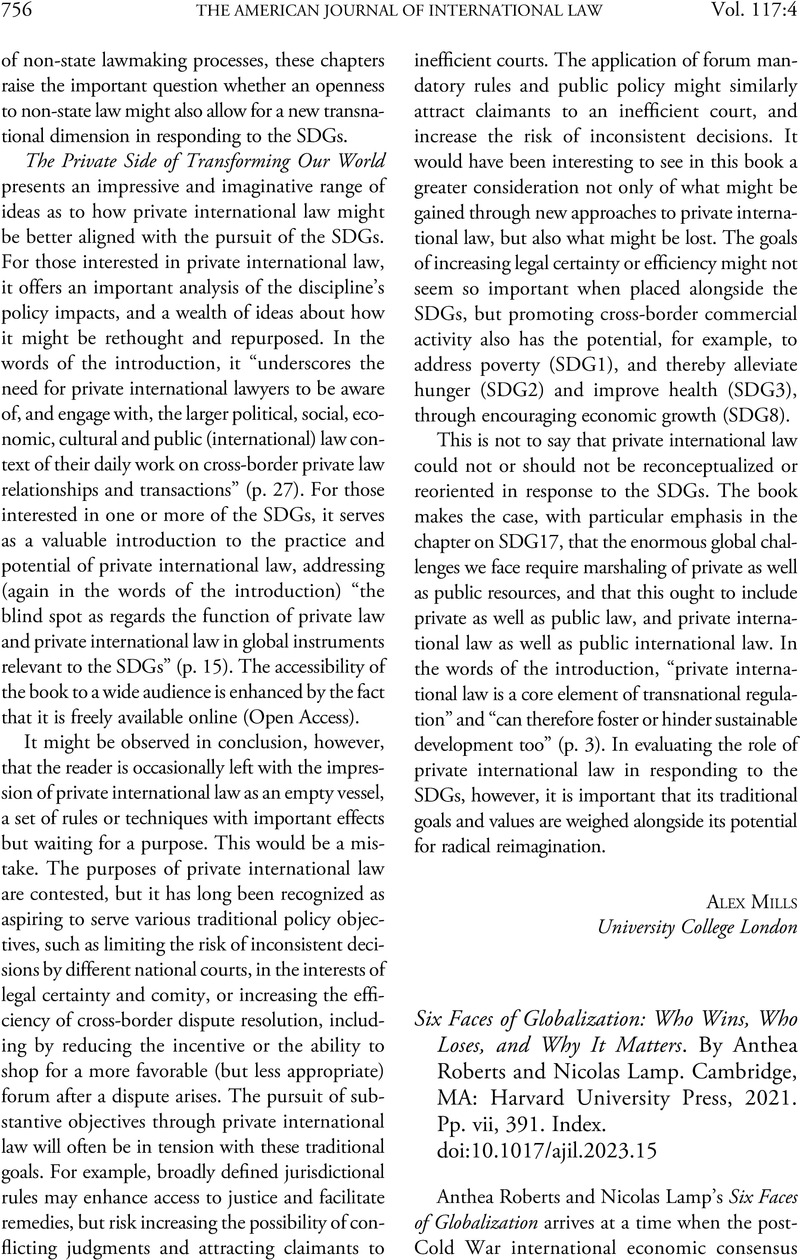No CrossRef data available.
Article contents
Six Faces of Globalization: Who Wins, Who Loses, and Why It Matters. By Anthea Roberts and Nicolas Lamp. Cambridge, MA: Harvard University Press, 2021. Pp. vii, 391. Index.
Review products
Published online by Cambridge University Press: 30 October 2023
Abstract

- Type
- Book Reviews
- Information
- Copyright
- Copyright © The Author(s), 2023. Published by Cambridge University Press for The American Society of International Law
References
1 See, e.g., Branko Milanovic, Global Inequality: A New Approach for the Age of Globalization (2016).
2 See, e.g., Thomas Piketty, Capital in the Twenty-First Century (2014).
3 See, e.g., Dani Rodrik, The Globalization Paradox: Democracy and the Future of the World Economy (2011); Dani Rodrik, Straight Talk on Trade: Ideas For a Sane World Economy (2017).
4 See, e.g., Rethinking Capitalism (Michael Jacobs & Mariana Mazzucato eds., 2016).
5 See, e.g., World Trade and Investment Law Reimagined: A Progressive Agenda for an Inclusive Globalization (Alvaro Santos, Chantal Thomas & David Trubek eds., 2019).
6 See Stefan Becket (@becket), Twitter (Apr. 10, 2018, 7:18 PM), at https://twitter.com/becket/status/983846618263891968/photo/1.
7 See, e.g., Antony Anghie, Imperialism, Sovereignty and the Making of International Law (2005).
8 For an effort to counter this conventional framing in international economic law, see Nicolás M. Perrone & Gregory Shaffer, Introduction to the Symposium on International Economic Law and Its Others, 116 AJIL Unbound 90, and, more generally, Anne Orford, A Jurisprudence of the Limit, in International Law and Its Others (Anne Orford ed., 2006).
9 WTO, Declaration on the TRIPS Agreement and Public Health, WTO Doc. WT/MIN(01)/Dec/2 (Nov. 20, 2001), at https://www.wto.org/english/thewto_e/minist_e/min01_e/mindecl_trips_e.htm.
10 See, e.g., Dani Rodrik, Has Globalization Gone Too Far? (1996); Joseph E. Stiglitz, Globalization and Its Discontents (2003); Sassen, Saskia, Women's Burden: Counter-geographies of Globalization and the Feminization of Survival, 53 J. Int'l Aff. 503 (2000)Google Scholar.
11 See, e.g., Jagdish Bhagwati, In Defense of Globalization (2004); Martin Wolf, Why Globalization Works (2004).
12 Oxford Cartographers, The Peters Projection Map, at https://www.oxfordcartographers.com/our-maps/peters-projection-map.


